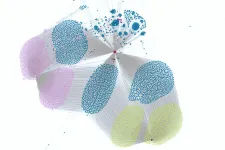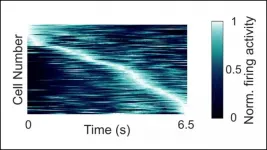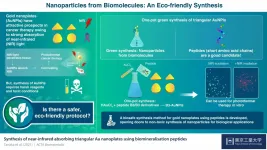Preliminary results of clinical trial for Crigler-Najjar syndrome
2021-06-28
(Press-News.org) Preliminary results from the European gene therapy trial for Crigler-Najjar syndrome, conducted by Genethon in collaboration with European network CureCN, were presented at the EASL (European Association for the Study of the Liver) annual International Liver Congress on June 26. Based on initial observations, the drug candidate is well tolerated and the first therapeutic effects have been demonstrated, to be confirmed as the trial continues.
Crigler-Najjar syndrome is a rare genetic liver disease characterized by abnormally high levels of bilirubin in the blood (hyperbilirubinemia). This accumulation of bilirubin is caused by a deficiency of the UGT1A1 enzyme, responsible for transforming bilirubin into a substance that can be eliminated by the body, and can result in significant neurological damage and death if not treated quickly. At present, patients must undergo phototherapy for up to 12 hours a day to keep their bilirubin levels below the toxicity threshold.
Dr. Lorenzo D'Antiga (Azienda Ospedaliera Papa Giovanni XXIII, Bergamo, Italy), one of the investigators working on the gene therapy trial being conducted into Crigler-Najjar syndrome by Genethon, presented the results from the first treated patients at this year's EASL (European Association for the Study of the Liver) congress. The treatment involves providing the liver cells with a copy of the UGT1A1 gene that encodes an enzyme designed to facilitate bilirubin elimination. Based on initial observations, the results are encouraging.
Specifically, the first two cohorts reveal that:
The product is safe and well tolerated in the four patients undergoing treatment
There appears to be a dose-response relationship (to be confirmed):
In cohort 1, treated at the lowest dose, the clinicians observed a temporary therapeutic effect but that was insufficient to allow prolonged stopping the phototherapy at the sixteenth week post-injection (the product efficacy endpoint)
In cohort 2, treated at a higher dose, a major reduction in bilirubin levels was demonstrated in the first patient, enabling her to stop phototherapy a few weeks ago. The second patient has also seen a major decrease in her bilirubin levels. Her treatment is too recent to demonstrate a stable decrease, but if this decrease is confirmed she will also be able to discontinue phototherapy in a few weeks' time.
"We are very excited with the results achieved so far in this trial of AAV-mediated gene therapy for Crigler Najjar syndrome. The treatment, at appropriate doses, has shown to be safe and able to correct the disease to an extent that allowed the first patient to stop daily phototherapy, eliminating the risk of neurological injury. The degree of improvement of the second patient suggests that soon she might be able to stop phototherapy too. Our work on the immunomodulation protocol is now focused on maintaining a durable effect in the long term. This innovative strategy may replace liver transplantation in patients with a genetic liver disease". Dr. Lorenzo D'Antiga, who treated the last two patients and presented their results at the EASL congress.
The trial uses a technology developed by Genethon's Immunology and Liver Gene Therapy team, headed up by Dr. Giuseppe Ronzitti: "The team has worked incredibly hard on this project, from designing and developing the approach right through to the trial. We designed the drug candidate, undertook the preclinical efficacy testing, then designed the product for the clinical trial. We are continuing our work to develop new approaches for other liver diseases".
"These initial observations presented at this year's EASL congress indicate that gene therapy could become an alternative treatment for this severe liver disease. We need to remain cautious, as the trial is ongoing and will allow us to evaluate these initial encouraging results in other patients and over a longer period." Frederic Revah, CEO of Genethon.
INFORMATION:
About the trial
This European trial aims to assess the product's safety, identify the optimal dose, and evaluate the therapeutic efficacy of the drug candidate. The clinical trial is being conducted at four European study sites: in France (Prof. Labrune - Hôpital Beclere, Clamart), Italy (Prof. Brunetti-Pierri - Hôpital Federico II; Prof. d'Antiga - Azienda Ospedaliera Papa Giovanni XXIII, Bergamo) and the Netherlands (Prof. Beuers - Academic Medical Center, Amsterdam). The project is supported by European consortium CureCN, which brings together 11 European partners, and has received funding from the European Union?s Horizon 2020 research and innovation program.
About Crigler-Najjar syndrome
Crigler-Najjar syndrome is a rare genetic liver disease (1 case in 1,000,000 births) characterized by the abnormal accumulation of bilirubin--a yellow substance produced by the liver--in all the tissues of the body. This hyperbilirubinemia is caused by a deficiency of the enzyme (UGT1A1) responsible for transforming bilirubin into a substance that can be eliminated by the body. When this enzyme does not work, bilirubin builds up, causing severe, chronic jaundice and brain toxicity. If it is not treated quickly, this accumulation of bilirubin can result in significant neurological damage and death. At present, affected patients must undergo phototherapy for up to 12 hours a day to keep their bilirubin levels below the toxicity threshold. The only treatment is liver transplantation -- a major, complicated procedure.
Press contact:
Stephanie Bardon - +33 (0)6 45 15 95 87 - communication@genethon.fr
ELSE PRESS RELEASES FROM THIS DATE:
2021-06-28
ATLANTA - JUNE 28, 2021 - A new study finds evidence for adverse effects of the COVID-19 pandemic on declines in cancer detection and surgical treatments. The study, appearing in JNCI: The Journal of the National Cancer Institute, finds a 10.2% decline in real-time electronic pathology reports from population-based cancer registries in 2020 compared with those in 2019.
This study observation period, through December 2020, is one of the longest to date for evaluating the effects of the COVID-19 pandemic on cancer-related trends. To learn more about the indirect effects of the pandemic on cancer care, investigators led by Robin Yabroff, PhD, MBA of the American ...
2021-06-28
Up to 7 million people each year receive care in an emergency department (ED) for chest pain, a symptom of a potential heart condition. Over 80 percent of chest pain patients, however, ultimately have no evidence of cardiovascular disease or acute coronary syndrome. To disincentivize patients from over-utilizing costly care, insurers and employers are increasingly opting for high-deductible health plans (HDHPs) that require significant out-of-pocket spending before coverage begins. Researchers from Brigham and Women's Hospital and Harvard Pilgrim Health Care Institute investigated whether ...
2021-06-28
The internet is full of dangers: Sensitive data can be leaked, malicious websites can allow hackers to access private computers. The Security & Privacy Research Unit at TU Wien in collaboration with Ca' Foscari University has now uncovered a new important security vulnerability that has been overlooked so far. Large websites often have many subdomains - for example, "sub.example.com" could be a subdomain of the website "example.com". With certain tricks, it is possible to take control of such subdomains. And if that happens, new security holes open up that also ...
2021-06-28
The exoplanet satellite hunter CHEOPS of the European Space Agency (ESA), in which the Instituto de Astrofísica de Canarias (IAC) is participating along with other European institutions, has unexpectedly detected a third planet passing in front of its star while it was exploring two previously known planets around the same star. This transit, according to researchers, will reveal exciting details about a strange planet "without a known equivalent".
The discovery is one of the first results of CHEOPS (CHaracterising ExOPlanet Satellite) and the first time that an exoplanet has been seen with a period longer than 100 days transiting a star which is sufficiently ...
2021-06-28
Scientists of Tomsk Polytechnic University were able to obtain polytetrafluoroethylene (PTFE) membranes using electrospinning. PTFE is known to be the most stable existent polymer. According to the scientists, it is a simple, affordable and easily scalable method, which will allow obtaining chemically stable membranes in industrial-scale production. The membranes can be used in petrochemical, aerospace, nuclear industries, carbon-free energy and medicine.
The latest results of the research of physical and chemical properties and biocompatibility of the obtained membranes are published ...
2021-06-28
The U.S. Food and Drug Administration's controversial decision to approve aducanumab for the treatment of Alzheimer's disease raises at least three major ethical issues that need to be addressed, states a new article in the Hastings Center Report:
Billions of dollars in Medicare resources (which is to say, taxpayer dollars) are at risk of being unjustly squandered.
Physicians must choose between facilitating this unjust squandering and denying desperate patients and families access to this drug.
Patients and families are having false hopes legitimated and encouraged when physicians prescribe aducanumab.
The drug's approval was contrary to the nearly unanimous judgment of an FDA advisory committee that there was little reliable evidence of significant ...
2021-06-28
HOUSTON - (June 28, 2021) - Rice University computer scientists are sending RAMBO to rescue genomic researchers who sometimes wait days or weeks for search results from enormous DNA databases.
DNA sequencing is so popular, genomic datasets are doubling in size every two years, and the tools to search the data haven't kept pace. Researchers who compare DNA across genomes or study the evolution of organisms like the virus that causes COVID-19 often wait weeks for software to index large, "metagenomic" databases, which get bigger every month and are now measured in petabytes.
RAMBO, which is short for "repeated and merged bloom filter," is a new method that can cut indexing times for such ...
2021-06-28
Neurons in the hippocampus fire during specific moments in time, according to research recently published in JNeurosci. The cells may contribute to memory by encoding information about the time and order of events.
Episodic memories involve remembering the "what, where, and when" of past experiences. The "where" may be encoded by place cells in the hippocampus, which fire in response to specific locations. Rodents have hippocampal neurons that fire in response to specific moments in time -- the "when" -- but until recently it was not known if the human brain contained them too.
Reddy et al. recorded the electrical activity of neurons in the hippocampus of epilepsy patients undergoing diagnostic invasive monitoring ...
2021-06-28
In cancer therapy, the effectiveness of an approach is determined by its ability to preserve the non-cancerous cells. Simply put, the higher the collateral damage, the greater are the side-effects of a therapy. An ideal situation is where only the cancer cells can be targeted and destroyed. In this regard, photothermal therapy--an approach in which cancer cells infused with gold nanoparticles can be heated up and destroyed using near-infrared (NIR) light that is strongly absorbed by the gold nanoparticles--has emerged as a promising strategy due to its minimally invasive nature.
"Because NIR light is able to penetrate biological tissues, it can illuminate ...
2021-06-28
The Structural Bioinformatics and Network Biology laboratory, led by ICREA Researcher Dr. Patrick Aloy, has completed the bioactivity information for a million molecules using deep machine-learning computational models. It has also disclosed a tool to predict the biological activity of any molecule, even when no experimental data are available.
This new methodology is based on the Chemical Checker, the largest database of bioactivity profiles for pseudo pharmaceuticals to date, developed by the same laboratory and published in 2020. The Chemical Checker collects information from 25 spaces of bioactivity for each molecule. These spaces are linked to the chemical structure of the molecule, the targets with which it interacts or the changes ...
LAST 30 PRESS RELEASES:
[Press-News.org] Preliminary results of clinical trial for Crigler-Najjar syndrome




